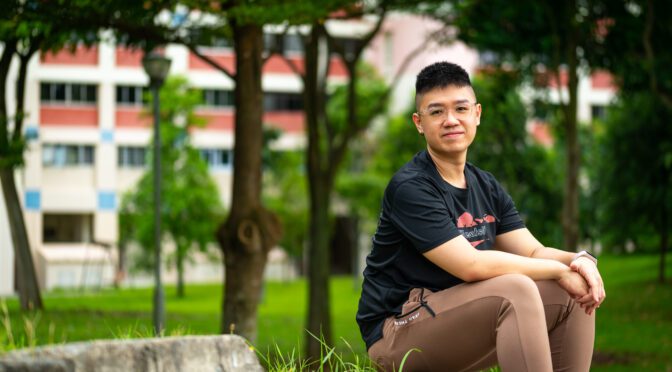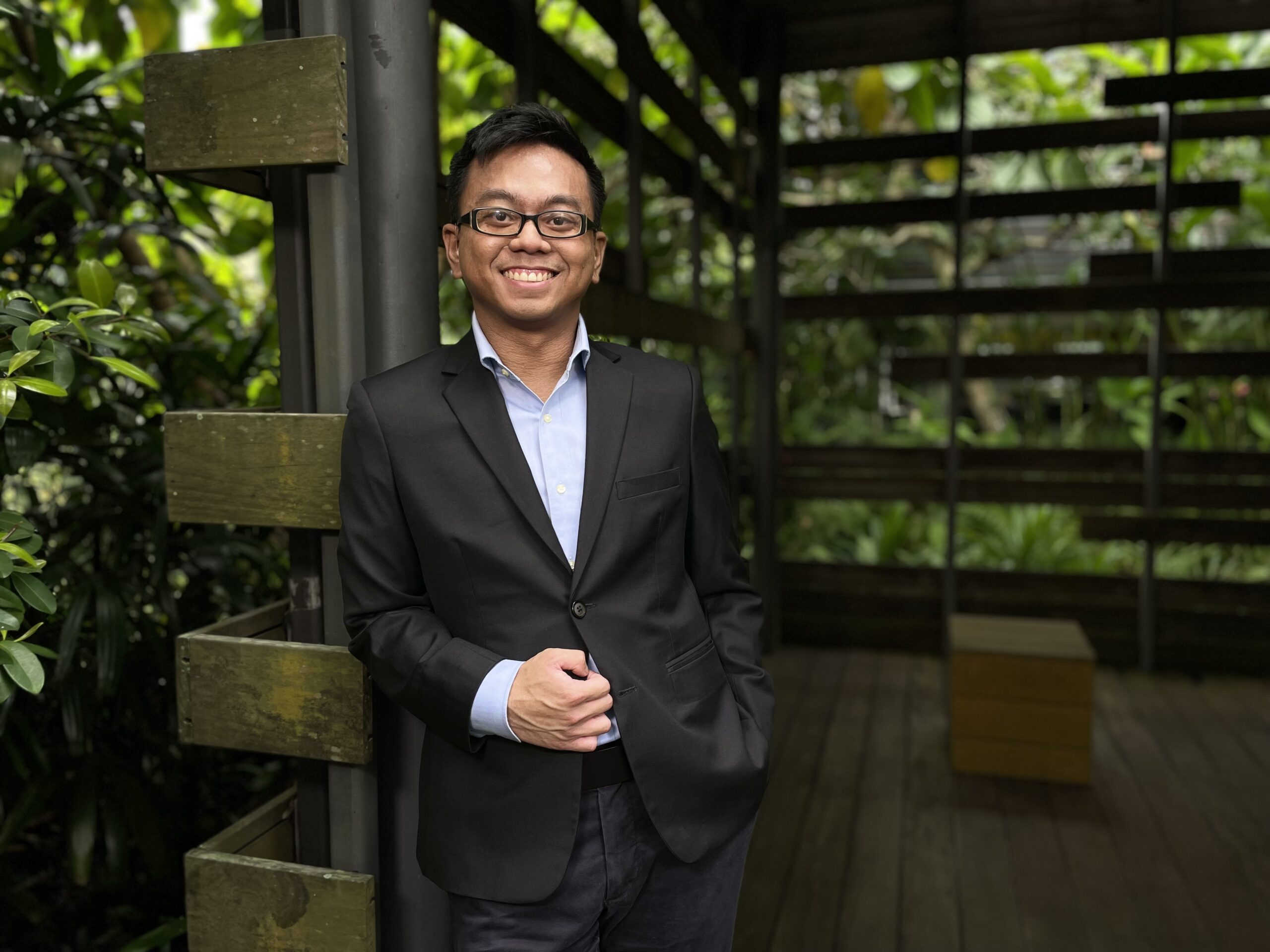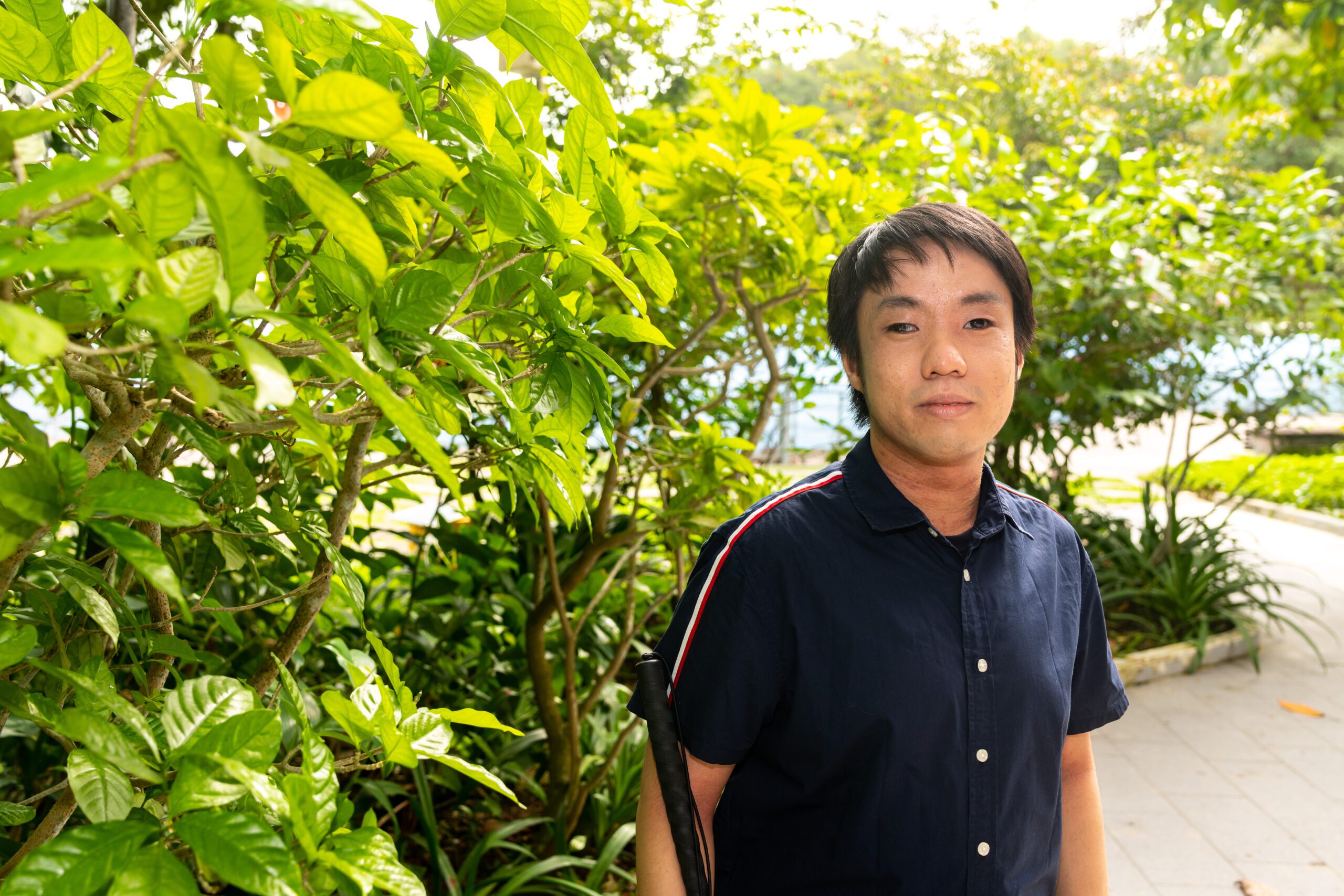‘Low-functioning’ autistics also have proprioceptive difficulties, so tying shoelaces or feeding themselves becomes uphill climbs or near-impossible tasks. But what do you know — the ‘high-functioning’ Dawn-joy Leong is highly clumsy too! Knocking into tables is a daily affair (and I will apologise to them). When I’m walking, I have to compose music in my mind and concentrate on its beat: it’s how I know to put one foot before the other. I will trip if an ill-placed rock is obstructing the road, because it messes up my time signature. Yet I’m sure-footed when it comes to dancing.
I recall a documentary that simply broke my heart. It centred on a ‘low-functioning’ autistic man in his late twenties who has complex needs. His mother, who is not a privileged woman, is his only support system. A montage of scenes depicted his incessant hitting of his head and eyes. In fact, he was at risk of going blind. Three seconds in, I shouted at the TV: ‘Someone get him to a doctor! He’s having a sensory problem.’ True enough, the next scene cut to him and his mother at a clinic awaiting an appointment: he was nursing a rotting tooth that had gone unnoticed.
The man was hitting his head because he was trying to convey an excruciating pain. The instinct of his mother, understandably, was to stop her son from self-hurting. But what of the medical professionals who attended to him? They should have known better. I just wished someone had given him pictures that he could point to or taught him how to communicate with an Augmented Assistive Communication system. Had this simple solution been offered to him, the protracted pain of tooth rot and ensuing damage to his eye could have been avoided. But everyone was so focused on correcting his ‘challenging behaviour’ that they neglected to think it was triggered by a physiological problem.
The story continued to delve into his plight: for sixteen years, he lived a cloistered life, unable to enrol into day care centres. A ray of hope came when he was finally admitted into one. The next scene left me utterly dismayed.
A call bell, suspended on a rope, rang out repeatedly — the scene’s eerily reminiscent of an exorcism — whenever the therapists tried to get him to answer to his name or complete a chore. And his reward was — what would you know — a carrot! I was mortified: it’s preposterous enough that you would train a human being as if he were a dog, why would you tempt him with something as unpalatable as a carrot? Or was this a literal application of the carrot-and-stick approach? I wouldn’t do anything for a carrot; would you? Entice me with something a lot better, like tiramisu, and I may (begrudgingly) respond to the call of a bell. Later, the stimulus of bell ringing was again used as a cue: he would have to complete given instructions, such as returning to his seat, when the timer went off. The scene ended abruptly with him plopping backwards and on to the floor, as if wholly defeated.
I believe everyone has a human spirit inside of him or her. For the autistic man in the documentary, I can only hope that someone has since bothered to appeal to his human spirit and find out about his hobbies and interests. Neurotypical autism experts, as is their wont, seek to treat the behaviours of autistics. Far too often, autistics are made to curb behaviours perceived to be unacceptable (even our stimming), to go through the wringer of normalisation. I don’t doubt that behavioural engineering works — in the short term. ‘Sit down.’ ‘Greet aunty.’ Positive outcomes are measured in the form of compliance. Crack the whip and the lion in a circus knows to tame his behaviour and jump through fire-ringed hoops, but sooner or later he will bite back: it’s his nature. And then he gets shot. Behavioural engineering is a treatment doctors prescribe in a knee-jerk reflex. But it is something many autistics have not chosen for themselves, just like how many gay youths do not choose conversion therapy. Lifelong trauma, as it is now revealed by many recipients, is its corollary.
So, Dawn-joy Leong, what should we do when an autistic child is smearing his faeces all over the wall? Are you suggesting that we do nothing and give him free will to smear his faeces? Not so. Let me propound an idea: what if we could redirect and teach him to smear paint on to a blank canvas instead? Forcing him to curb this smearing action is like cutting off the limb of a tree. He internalises that the action of smearing is unacceptable, and so avoids it wholly. In the eyes of his doctors (and undoubtedly his grateful family), he is now made good and proper. But you’re left with a stump: the chance of his becoming an artist is forever robbed.
Research into autism should no longer happen in silos. Modern therapy cannot remain the status quo where neurotypicals dictate what is best for us. The current approach is too rigid, and confusing: it is designed accordingly to how neurotypicals work, to make them feel good about having made miniscule progress. How autistic therapists (and we do exist, mind you) do it is we sense the energy of the person before us, and slowly we understand how we can tailor help to the person. If the goal is to help someone speak, then we need to sense the person, and catch the moment that he wants to speak, and apply whatever suitable techniques. I used to do it, but it saps too much physical energy.
The way I see it is that arbitrary labels of ‘high and low functioning’ and the accompanying reductions of human beings into mere levels are what neurotypicals need. Without which, they are at a loss to know how to deal and work with autistic people. They don’t know the amount of support to give us. Ironically, these labels are their support needs. Allies who truly want to help autistics have to learn to enter our world. Autistic therapists as well as neurotypical allies urgently need to join hands, and be a part of a new movement to move the needle of modern science.
That said, not every autistic person is destined to become a genius like Tito Rajarshi Mukhopadhyay or Temple Grandin, just like how not every neurotypical person will go on to achieve great things in life. Maybe it turns out one can only slot cookies into a jar — if he’s happy doing that, why not? An autistic friend of mine has a degree from an Australian university. He writes eloquently about his travels and unlike me has a penchant for deep-diving into history. Yet, he chooses to work in a supermarket, tasked with stocking groceries and returning trolleys to their designated point. It is a job that is a perfect fit for him — he relishes the repetitive nature of the work and has encyclopaedic knowledge of all the groceries, from their brands to inventory levels. He also has the salubrious space where he gets to be himself. He suffers only when he is asked to go frontline and stand in as a cashier: now he has to deal with patrons’ requests. An autistic mind is black and white — ‘But you spoilt it, so you’re not entitled to make an exchange or get a refund.’ To function in the world of the non-autistics, he has to learn to be less pedantic and to acquiesce. This job that he loves is how he earns his keep, pays for his travels and be a contributing member of society. Yet it is also a job that the society regards as lowly, reserved only for disabled people with no better career prospects.


